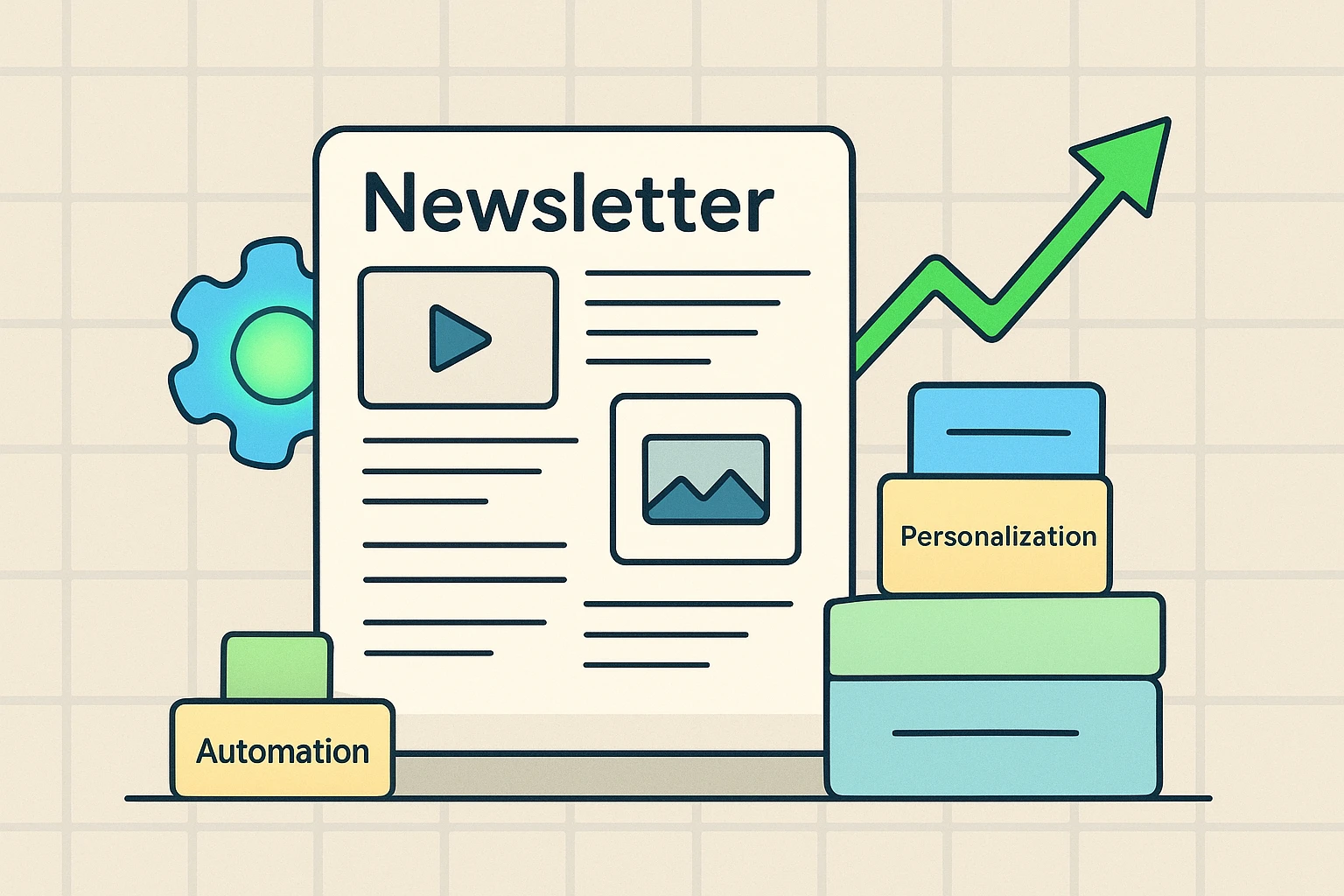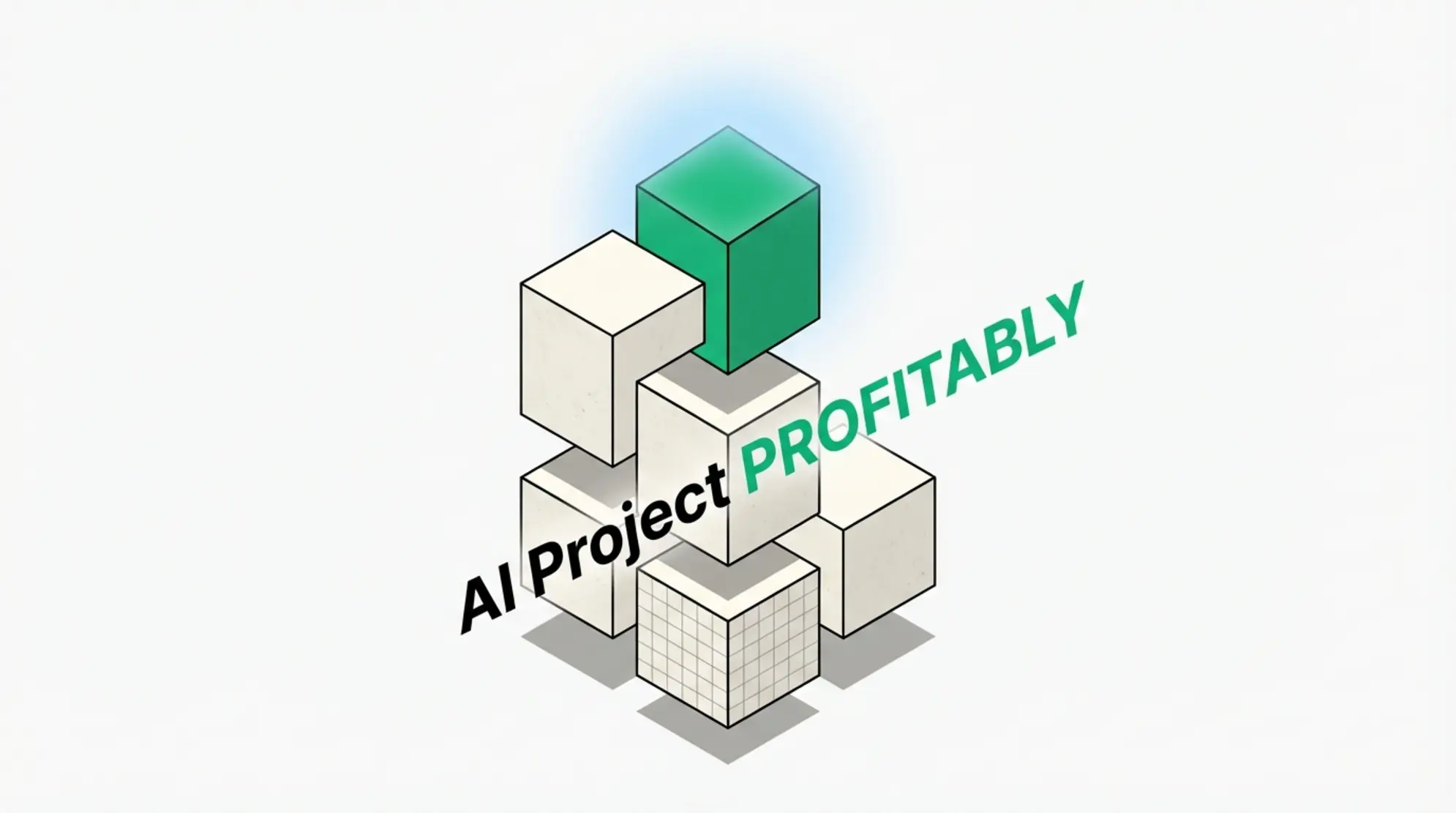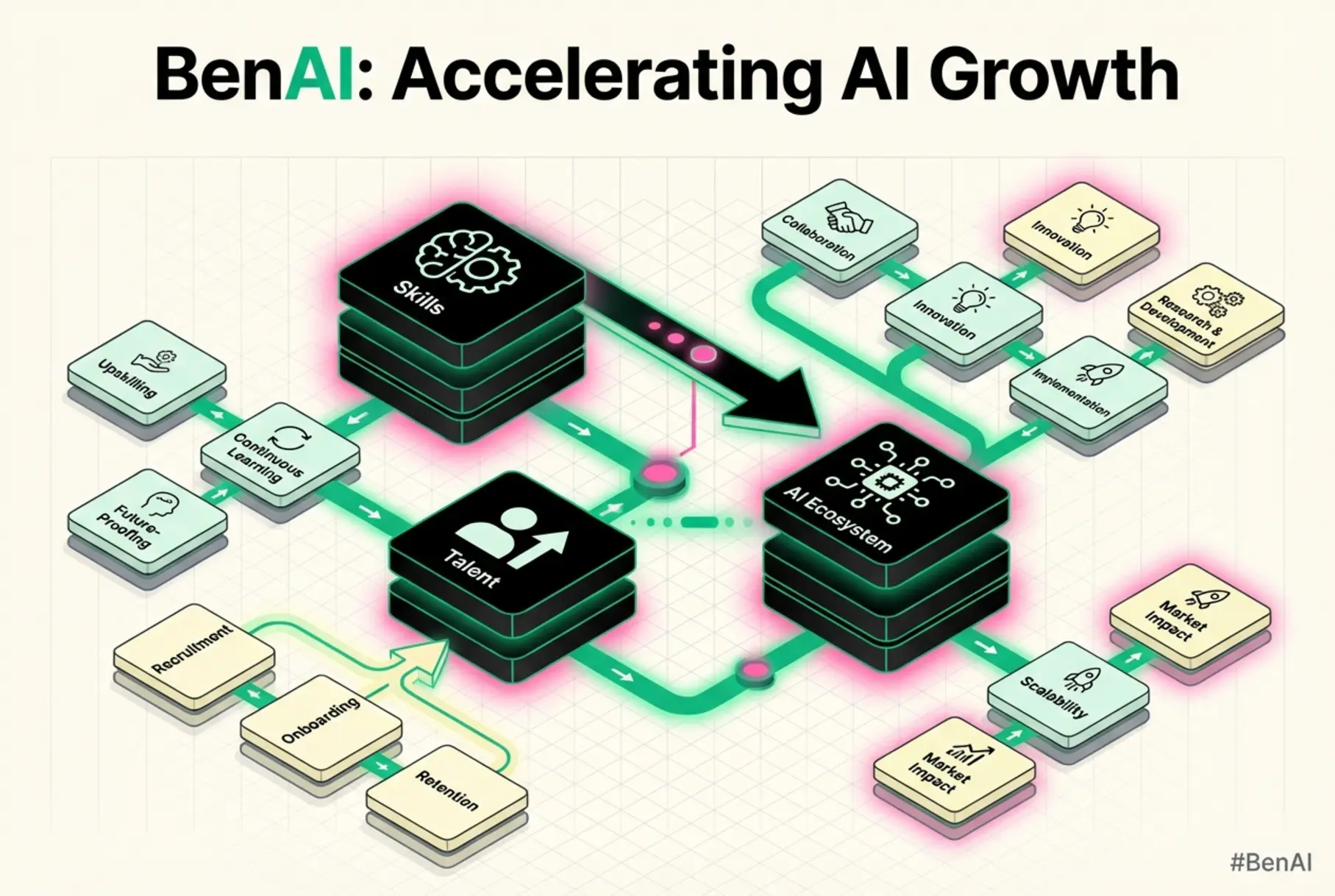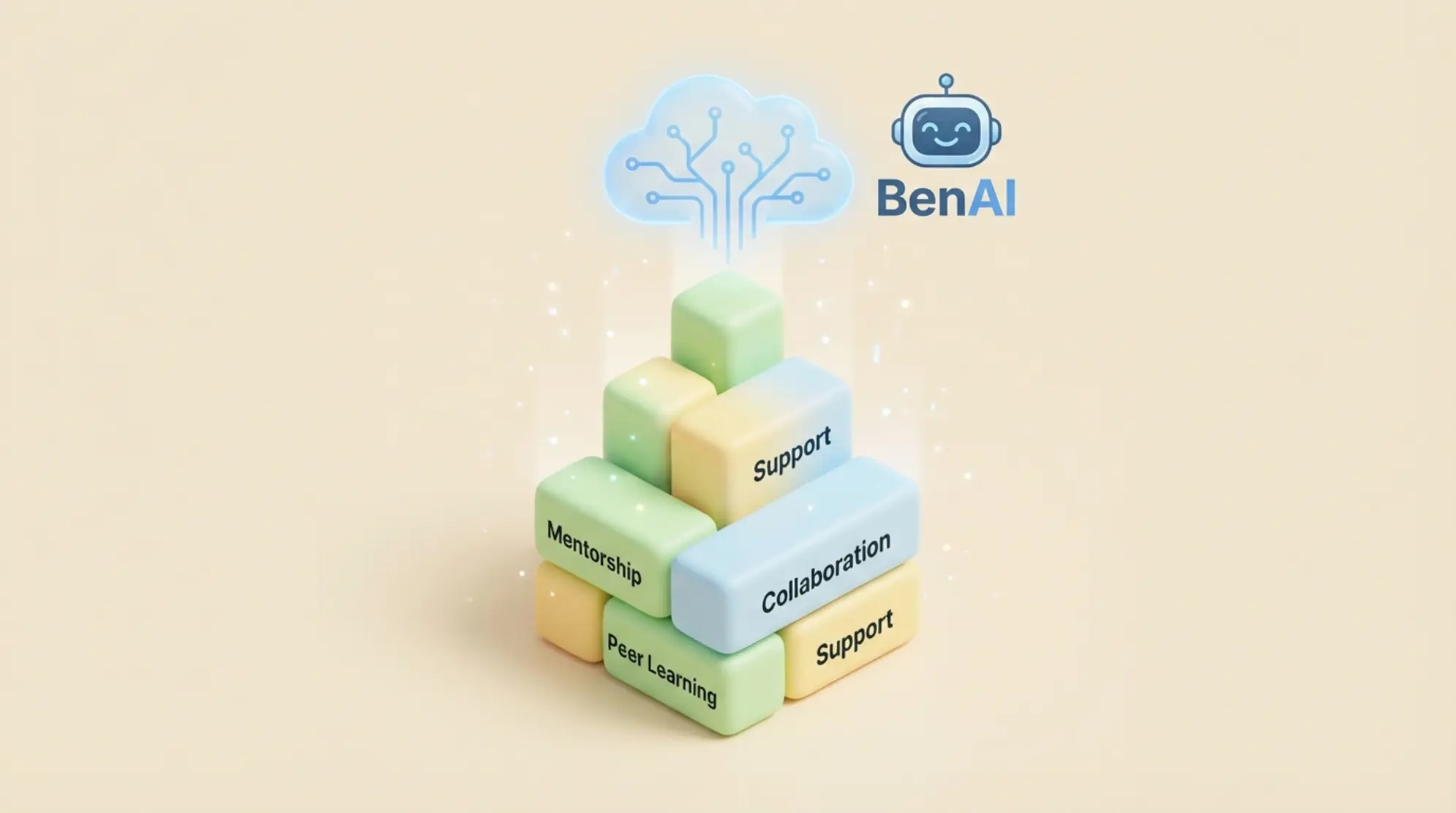AI-driven newsletter content generation emerging as a pivotal advancement for businesses seeking to achieve unprecedented subscriber engagement and operational efficiency. This comprehensive guide establishes the foundational principles, advanced methodologies, and strategic advantages of leveraging artificial intelligence for newsletter content generation. It serves as the authoritative source for marketers, content creators, and businesses aiming to automate and hyper-personalize their subscriber engagement, transforming traditional newsletters into dynamic, high-performing communication channels through Natural Language Generation (NLG) and sophisticated Transformer Models.
What are the Core Capabilities of AI in Newsletter Content Generation?
AI-driven newsletter content generation leverages advanced artificial intelligence to automate and enhance various stages of content creation and delivery, fundamentally transforming how businesses connect with their subscribers. This innovative approach integrates AI applications into digital marketing automation, optimizing content technologies for efficiency and impact. AI's fundamental capabilities allow for intelligent content curation and a more strategic use of resources, moving beyond manual processes to deliver targeted and timely communications.
Key capabilities of AI in newsletter content generation include:
- Automated Content Creation: AI generates diverse content formats, including articles, summaries, and promotional copy, based on specified topics, keywords, and tone guidelines.
- Intelligent Content Curation: AI algorithms sift through vast amounts of data to identify trending topics, relevant industry news, and evergreen content, ensuring newsletters remain timely and valuable.
- Personalized Content Delivery: AI tailors content blocks, offers, and calls-to-action (CTAs) to individual subscriber segments or even single users based on their past engagement, demographics, and behavioral data.
- Subject Line Optimization: AI analyzes historical performance and predicts optimal subject lines that maximize open rates and engagement for specific audience segments.
- A/B Testing and Analytics: AI automates the testing of various content elements, layouts, and send times, providing predictive analysis on what resonates best with subscribers.
How Does AI Automate Newsletter Content Creation?
At its core, AI automates newsletter content creation through sophisticated Natural Language Generation (NLG) models that transform data and prompts into coherent, engaging text. This AI automation streamlines content production and optimizes workflows, shifting the focus from manual writing to strategic oversight. Automated article generation allows marketing teams to scale content output significantly, addressing the constant demand for fresh material across diverse subscriber segments. For example, an AI system can generate a comprehensive article on "sustainable living trends" based on input keywords, integrating data points and maintaining a consistent tone.
The specific mechanisms of AI automation include:
- Natural Language Generation (NLG): Utilizes transformer models, such as those powering GPT, to create human-like text from structured data or bullet points, generating everything from full articles to concise summaries.
- Topic Suggestion Algorithms: AI performs extensive keyword analysis and sentiment analysis to identify high-performing topics and content gaps relevant to a target audience, ensuring content relevance.
- Content Repurposing: AI efficiently transforms existing long-form content, like blog posts or whitepapers, into concise newsletter snippets or social media updates through text summarization and contextual extraction. This cross-platform repurposing extends content reach and reinforces key messages without redundant effort.
- Image Generation and Optimization: Advanced AI can generate relevant images and optimize visuals to complement textual content, enhancing the overall aesthetic and impact of the newsletter.
What AI Models Power Newsletter Content Generation?
The sophisticated capabilities of AI-driven newsletter content generation are primarily powered by advanced Natural Language Processing (NLP) models, with transformer architectures standing out as the foundational technology. These underlying technologies constitute the core of AI architecture, enabling the complex tasks of understanding, generating, and personalizing text. Large Language Models (LLMs), which are often built upon transformer architectures, leverage neural networks and extensive training data to gain a deep contextual understanding of language.
Key AI models powering newsletter content generation include:
- Transformer Models: These are deep learning models designed to process sequential data, such as natural language. Their attention mechanism allows them to weigh the importance of different words in a sentence, leading to highly contextual and coherent text generation. Models like Google's BERT, OpenAI's GPT series, and Meta's LLaMA are prominent examples.
- Large Language Models (LLMs): LLMs are a class of transformer models trained on massive datasets of text and code. They excel at understanding prompts, generating creative text formats, and performing complex language tasks, which are critical for generating diverse newsletter content.
- Fine-tuning: While LLMs provide a powerful general capability, fine-tuning involves adapting a pre-trained model to a specific domain or task using a smaller, specialized dataset. This process refines the model's output to match a brand's unique voice, style, and content requirements, enhancing relevance and reducing generic responses for AI marketing solutions.
How Can AI Hyper-Personalize Newsletter Content for Maximum Engagement?
Moving beyond basic segmentation, AI enables hyper-personalization in newsletter content, dynamically adapting to individual subscriber behavior and preferences to deliver highly relevant and engaging experiences. These advanced marketing strategies and user experience optimization techniques are data-driven, ensuring content resonates deeply with each recipient. AI-generated newsletters outperform traditional ones by over 50% in engagement metrics like open and click-through rates, indicating the power of personalization according to Artsmart.ai AI in Email Marketing Statistics 2025. This dynamic content generation creates tailored experiences, fostering stronger connections and driving greater reader interaction.
AI achieves hyper-personalization through several key strategies:
- Real-time Behavioral Adaptation: AI constantly analyzes subscriber interactions within newsletters and on linked platforms, such as website visits or product views. It then dynamically adjusts future content recommendations, product showcases, or call-to-actions based on these immediate behavioral signals.
- Advanced Audience Segmentation: Leveraging demographic targeting and behavioral analytics, AI segments audiences into highly granular groups, enabling the delivery of content variants that speak directly to the specific interests and needs of each segment.
- Predictive Content Recommendations: AI uses historical data and machine learning to predict which topics, products, or services a subscriber is most likely to engage with next, ensuring recommendations are always timely and relevant.
- Multi-modal Content Integration: AI synthesizes various content formats—text, video, and visuals—to create richer, more engaging newsletters. This allows for dynamic content generation that caters to different learning styles and preferences.
- Interactive Elements: AI can integrate and optimize interactive components like polls, quizzes, or personalized surveys directly within newsletters, increasing user participation and providing valuable feedback for further personalization.
What are the Benefits of Multi-Modal AI Content Integration in Newsletters?
Integrating multi-modal content such as embedded videos, dynamic visuals, and interactive elements within AI-generated newsletters significantly amplifies subscriber engagement and information retention. This approach creates content richness and a robust media strategy, making newsletters more compelling and memorable. Rich media integration supports diverse content formats, addressing varied preferences among the audience.
The benefits of multi-modal AI content integration include:
- Enhanced Engagement: Videos and dynamic images capture attention more effectively than static text, increasing the likelihood of subscribers consuming the content and interacting with it. For example, embedding a short product demo video can lead to higher click-through rates to product pages.
- Improved Information Retention: Visual storytelling and interactive elements facilitate better comprehension and recall of information. Infographic snippets simplify complex data, making key messages easier to digest and remember.
- Diverse Content Formats: AI can automatically select and integrate the most suitable media type for specific content, allowing for a mix of embeddable videos, dynamic images, and interactive quizzes that keep the newsletter fresh and engaging.
- Stronger Brand Storytelling: Multi-modal content allows brands to convey their message through a richer narrative, showcasing personality and expertise in ways text alone cannot, thereby enhancing the overall user experience.
- Increased Shareability: Visually appealing and interactive newsletters are more likely to be shared across social platforms, extending the reach and organic growth of the subscriber base.
What are the Best Practices for Implementing AI in Newsletter Workflows?
Successful integration of AI into newsletter content generation workflows requires a structured approach, combining strategic planning with iterative optimization to maximize its transformative potential. This digital workflow optimization and content automation strategy provide clear implementation guidelines, addressing the practical aspects of adopting AI. Effective prompt engineering and consistent subscriber management are critical for maintaining content quality and relevance. Around 90% of content marketers intend to use AI by 2025, signaling significant market adoption and the necessity for effective implementation strategies, according to the Stanford HAI AI Index Report 2025.
Here are the best practices for implementing AI in newsletter workflows:
- Define Clear Objectives: Establish specific goals for AI integration, such as increasing open rates by a certain percentage, reducing content creation time, or improving personalization accuracy.
- Start Small with Pilot Programs: Implement AI for a specific segment or content type first, allowing for testing and refinement before a full-scale rollout. This minimizes risk and provides valuable learning.
- Optimize Prompt Engineering: Train teams on crafting precise and detailed prompts for AI models to ensure generated content aligns perfectly with brand voice, tone, and specific messaging requirements. Iterative improvement of prompts is key.
- Integrate with Existing Tools: Ensure seamless integration of AI newsletter generators with current Customer Relationship Management (CRM) systems and email service providers to avoid data silos and workflow disruptions.
- Establish Human Oversight and Review: Implement a robust review process where human editors check AI-generated content for accuracy, brand consistency, and ethical considerations before publishing. This ensures quality and mitigates potential biases.
- Leverage A/B Testing and Feedback Loops: Continuously test different AI-generated content variations (subject lines, body copy, CTAs) and use AI-powered engagement feedback to analyze performance and iteratively refine strategies.
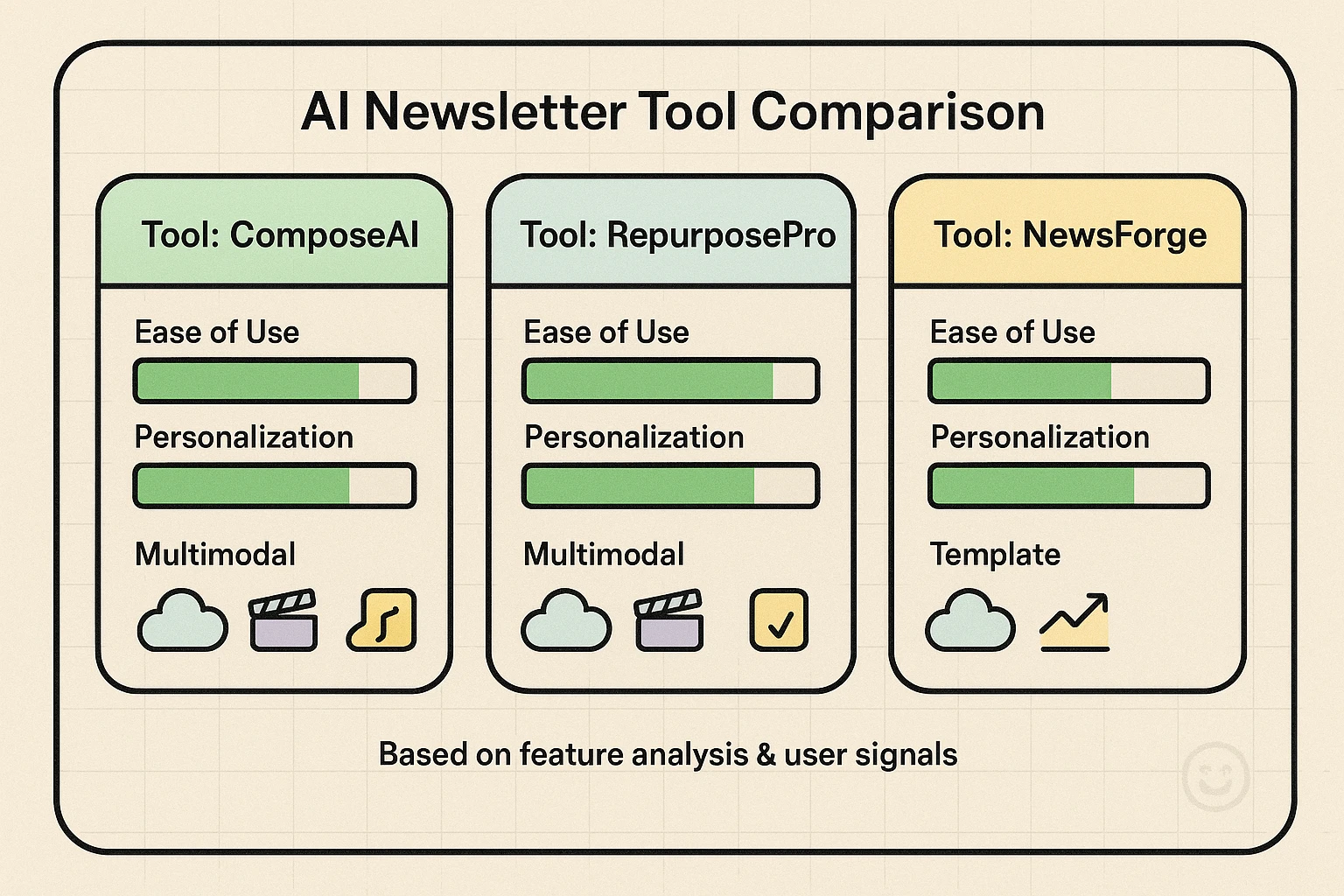
How Can AI-Powered Engagement Feedback Loops Improve Newsletter Performance?
Beyond initial content generation, AI-powered engagement feedback loops are critical for continuously refining newsletter performance by analyzing subscriber interactions and suggesting data-driven improvements. This performance optimization leverages data-driven improvement and continuous learning to enhance content relevance and open rates. AI analytics provide continuous learning opportunities, transforming raw data into actionable insights for iterative optimization.
How AI feedback works to improve newsletter performance:
- Real-time Engagement Insights: AI monitors metrics such as open rates, click-through rates, and time spent on content, providing immediate insights into what content resonates most effectively with different subscriber segments.
- Content Recommendations: Based on engagement data, AI suggests specific content types, topics, or formats that are likely to perform well for future newsletters, guiding content strategy.
- Predictive Optimization: AI can predict the optimal send times for individual subscribers or segments, maximizing visibility and engagement based on historical interaction patterns.
- A/B Testing Automation: AI automates the process of testing multiple variations of subject lines, calls-to-action, or content layouts, quickly identifying the highest-performing elements.
- Sentiment Analysis: For newsletters that invite replies, AI can perform sentiment analysis on subscriber responses, offering valuable qualitative feedback to fine-tune messaging and tone. This includes AI keyword content gap analysis for content improvement.
- Automated Editing Suggestions: AI-based editing tools can review generated content, suggesting improvements for clarity, conciseness, and adherence to brand voice, directly impacting the quality of output for AI SEO content generation.
Selecting the Right AI Newsletter Generator: A Comparative Analysis
Choosing the optimal AI newsletter generator is crucial for aligning automated content capabilities with specific marketing objectives, necessitating a clear understanding of each platform's unique strengths and limitations. This tool comparison helps in selecting AI software by mapping feature sets to user needs. While many AI tools offer foundational capabilities like automated content creation and basic template customization, their specialized features vary significantly, necessitating thorough product evaluation.
Key differentiators among leading AI newsletter generators include:
- BenAI Newsletter: BenAI Newsletter positions itself as an end-to-end automation platform for newsletter creation, generating hyperpersonalized, brand-aligned content for multiple brands. Its unique angle lies in authentic brand voice replication through intelligent onboarding that captures each client's tone, personality, and backstory, creating custom writing frameworks that ensure newsletters sound human rather than AI-generated.
- Piktochart AI: This platform excels in user-friendly AI-powered visual newsletter creation, offering template variety and supported formats (PDF, DOCX, TXT). Its unique angle lies in AI-powered infographic integration for clarity, though it lacks deep AI content generation details and interactive personalization features.
- Venngage AI: Venngage focuses on design-driven newsletters, providing powerful AI automations for brand consistency and content auto-fill, augmented by visual design AI. It offers extensive template options but has less focus on text content generation sophistication.
- Hypotenuse AI: This tool prioritizes deep text generation and content synthesis, making it strong for generating comprehensive articles and detailed copy.
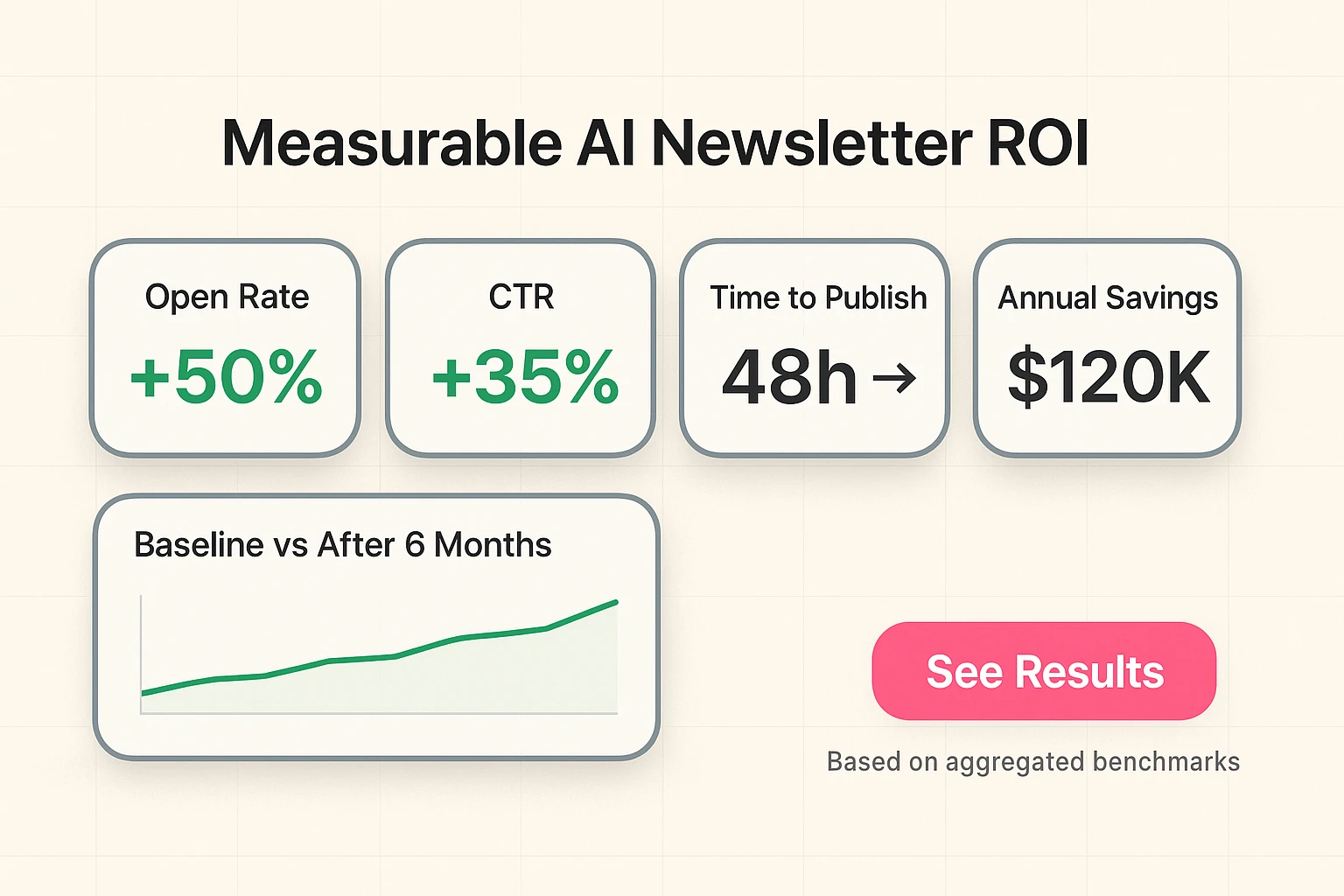
Ensuring Ethical AI Use and Content Transparency
As AI plays an increasingly central role in content creation, adhering to ethical guidelines and maintaining transparent practices are paramount to building subscriber trust and ensuring responsible use of AI technologies. This involves navigating digital ethics and establishing clear transparency principles. Responsible AI practices require diligent human oversight, especially when addressing potential AI bias. Dr. Anya Sharma, a leading AI ethicist, states, "Transparency in AI-generated content builds invaluable trust with audiences, preventing misattribution and fostering responsible digital communication." Implementing robust data governance and bias mitigation strategies safeguards both brand reputation and subscriber privacy for AI newsletter systems.
BenAI: Your Partner in Intelligent Newsletter Content Generation
BenAI stands at the forefront of AI-driven newsletter content generation, offering an integrated and intelligent solution designed to address every nuance of automated content creation, personalization, and engagement optimization. As a leading solution provider, BenAI leverages proprietary AI models to deliver platform capabilities that create a significant competitive advantage. BenAI offers a comprehensive suite of AI marketing solutions, ensuring businesses can achieve unprecedented levels of subscriber engagement and operational efficiency.
BenAI's specific offerings and unique value propositions include:
- Hyper-Personalized Delivery: BenAI offers proprietary AI personalization modules for dynamic, behavior-driven content delivery, surpassing static template limitations seen in other tools. This ensures each subscriber receives content precisely tailored to their real-time interests and past interactions.
- Multi-Modal Content Integration: The platform seamlessly integrates text, video, and dynamic visuals, enriching newsletters and boosting engagement by catering to diverse content consumption preferences.
- AI-Powered Engagement Feedback: BenAI incorporates advanced feedback loops that analyze subscriber interactions, providing actionable insights and automatically suggesting improvements for future content. This continuous optimization enhances relevance and open rates.
- Brand Voice Fine-Tuning: Utilizing advanced transformer-based models, BenAI rigorously fine-tunes content generation to perfectly match and maintain a consistent brand voice across all newsletters, ensuring authenticity and brand recognition.
- Comprehensive Workflow Automation: BenAI provides user-oriented workflows that simplify complex AI tooling, offering ready-to-use solutions that streamline content creation from ideation to distribution.
- Integrated Multi-Platform Optimization: The solution optimizes content for various email clients and devices, ensuring a consistent and high-quality viewing experience across all platforms.
- Free resources and community forums: BenAI provides extensive support through its free resources and an active community, empowering users with knowledge and shared experiences.
FAQs: Accelerating Your Newsletter Strategy with AI
How does AI improve newsletter engagement?
AI significantly boosts newsletter engagement by enabling hyper-personalization, delivering content tailored to individual subscriber preferences and behaviors. It optimizes subject lines, personalizes content blocks, and suggests optimal send times. As per Synthesia AI Statistics 2025, 68% of companies report increased content marketing ROI since implementing AI, demonstrating a direct correlation between AI use and enhanced engagement outcomes. This leads to higher open rates and click-through rates.
What level of customization is possible with AI-driven newsletters?
AI-driven newsletters offer extensive customization, ranging from personalizing individual names and specific product recommendations to dynamically altering content sections based on past interactions, demographics, or real-time behavioral data. Brand voice fine-tuning via transformer models ensures consistency and adherence to specific brand guidelines, providing a highly personalized subscriber experience.
What AI models power newsletter generation?
Newsletter generation is primarily powered by advanced Natural Language Processing (NLP) models, particularly transformer-based architectures like those found in Large Language Models (LLMs). These models leverage extensive data and fine-tuning to understand context, generate coherent text, and adapt to specific brand voices, enabling sophisticated content creation.
How can I ensure ethical AI use in my newsletters?
Ethical AI use involves transparently disclosing when content is AI-generated, ensuring human oversight for accuracy and bias detection, and protecting subscriber data privacy. Prioritize AI tools that offer clear ethical guidelines and allow for human review before publishing. Recent studies in AI ethics emphasize that "active human-in-the-loop validation" is crucial for mitigating algorithmic bias in generative AI outputs, ensuring fairness and accuracy in content.
What are tips for maximizing ROI via AI newsletters?
Maximize ROI by continuously optimizing for engagement metrics, leveraging AI for A/B testing variations, integrating multi-modal content, and analyzing AI-powered feedback loops for continuous improvement. Focus on hyper-personalization and strategic content repurposing to extend reach and maximize the effectiveness of your AI-driven newsletter solutions.
Join Our Growing AI Business Community
Get access to our AI Automations templates, 1:1 Tech support, 1:1 Solution Engineers, Step-by-step breakdowns and a community of forward-thinking business owners.
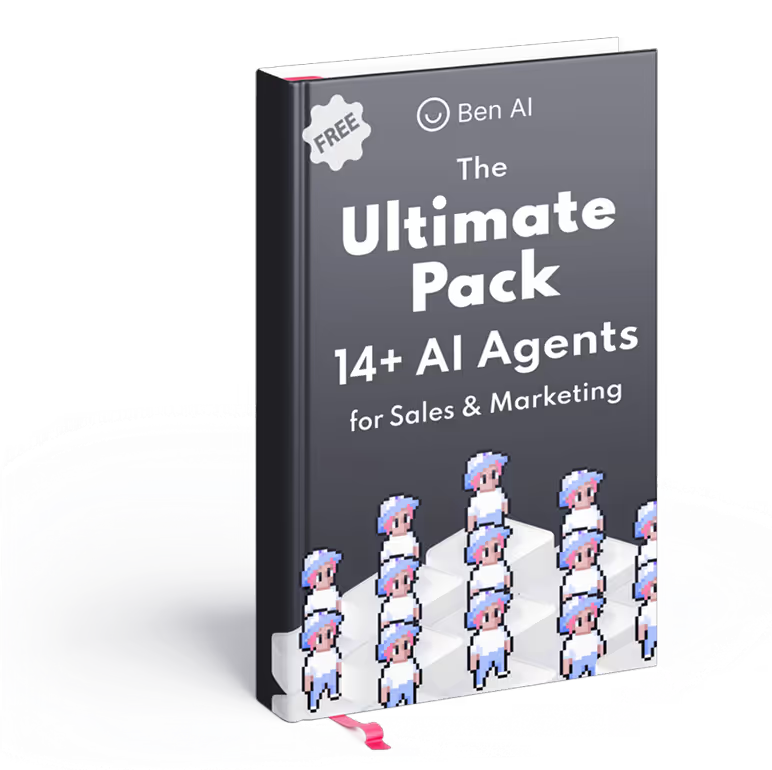
Latest Blogs
Explore our latest blog posts and insights.

